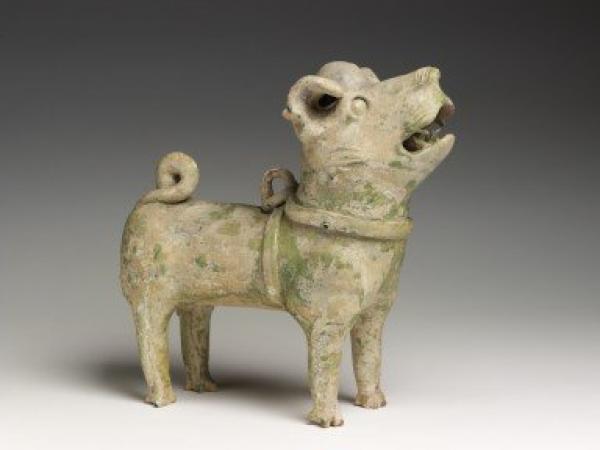This year Chinese New Year Day falls on 3rd February. Celebrations usually go on a little longer. In ancient China the finale of festival activities was a splendid display of brightly lit lanterns on the 15th day, after sunset.
The coming new year will be the Year of the Rabbit (some say ‘Hare’). Before 1912 the Chinese reckoning of the passage of time was not linear, but cyclical. The Chinese people did not call one year 1001, the following year 1002, and so on. The reckoning of any given year consisted of two parts – the heavenly stem (there are ten) and the earthly branch (there are twelve). The cycle repeated itself every sixty years.
The custom of pairing an animal with each of the earthly branches dates back to very old times, and there are plenty of legends and folklore surrounding those 12 animals. To say that someone born in the Year of the Rabbit would be of such and such a character, however, is a fairly recent development. There is no mention of such a belief in old Chinese texts.
The zodiac animals feature abundantly in Chinese art, some more popular than others. The following examples are selected from the Imperial Chinese Robes exhibition or from the V&A’s own collection.
 RABBIT. Detail of Emperor’s summer court robe showing the moon. Xianfeng reign period (1851-1861). Palace Museum Gu43476
RABBIT. Detail of Emperor’s summer court robe showing the moon. Xianfeng reign period (1851-1861). Palace Museum Gu43476
Legend has it that the living things on the moon are a lady called Chang-E, a man called Wu Gang who is forever felling a cassia tree, and a rabbit that pounds the exilir of immortality. As a result the rabbit is often associated with the moon.
 DRAGON. Detail of Emperor’s winter court robe showing the dragon design. Jiaqing reign period (1796-1820). Palace Museum Gu44994
DRAGON. Detail of Emperor’s winter court robe showing the dragon design. Jiaqing reign period (1796-1820). Palace Museum Gu44994
The Chinese dragon is an auspicious animal, not one that breathes fire. The emperor’s robes are often adorned with the dragon design, an indirect statement that the emperor would also bring good fortune to the country.
 SNAKE. Earthenware, Tang dynasty (618-907). V&A C.103E-1929
SNAKE. Earthenware, Tang dynasty (618-907). V&A C.103E-1929
During the Tang dynasty sets of zodiac animals were modelled as having human bodies. This piece is from such a set.
 HORSE. Painting by Xu Beijong, dated 1944. V&A E.493-1947
HORSE. Painting by Xu Beijong, dated 1944. V&A E.493-1947
The horse is a means of transport. One of the ancient kings, King Mu of Zhou, had eight magnificent horses that could take him not only to the farthest corners on earth but also to the heavens. Chinese painters loved painting horses, seeing it as the most challenging to their skill.
 RAM. Cloisonné ram-shaped box. Qianlong reign period (1736-1795). V&A M.192-1917
RAM. Cloisonné ram-shaped box. Qianlong reign period (1736-1795). V&A M.192-1917
The Chinese word for ‘ram’ pronounces as ‘yang’, same as that for ‘sun’, hence the ram is another auspicious symbol.
 MONKEY. Agate, 1760-1800. V&A 1646-1882
MONKEY. Agate, 1760-1800. V&A 1646-1882
The monkey is a hero character in a hugely popular novel, Journey to the West. The monk Xuanzang travelled thousands of miles to India to collect Buddhist scriptures. One of his disciples was a monkey, who protected him from the many perils during the journey.
 COCKEREL. Earthenware, Eastern Han dynasty (25-220). V&A Circ.44-1935
COCKEREL. Earthenware, Eastern Han dynasty (25-220). V&A Circ.44-1935
The cockerel was a common domestic animal, models of which were often buried with a deceased person during the Han dynasty (206 BC-AD 220), so that the person could continue to live in the same way as while he was alive.
 DOG. Earthenware, Eastern Han dynasty (25-220). V&A C.167-1914
DOG. Earthenware, Eastern Han dynasty (25-220). V&A C.167-1914
In the Han dynasty (206 BC-AD 220) dogs were bred for food, like pigs and lambs. It was only in later days that the Chinese people changed their diet.
 PIG. Jade, Han dynasty (206 BC-AD 220). V&A A.26-1935
PIG. Jade, Han dynasty (206 BC-AD 220). V&A A.26-1935
The pig is also a common domestic animal. Some models of pigs are made of jade rather than pottery. The style is known as the ‘Han eight cut’, meaning the craftsman made minimal use of his carving knife to realize the shape of the animal.
 RAT. Porcelain teapot and cup with rat design, 2008. V&A FE.68-2008
RAT. Porcelain teapot and cup with rat design, 2008. V&A FE.68-2008
The rat was seldom employed as decorative motif on old Chinese artefacts. Shown here are a modern teapot and cup made in Jingdezhen.
 OX. Jade, 18th century. V&A 1638-1882
OX. Jade, 18th century. V&A 1638-1882
To the Chinese farmer the ox was his best friend, without which he would have to toil a lot more in the field. A boy on the back of an ox is a romanticized way to represent a diligent yet contented population going about their business in a peaceful time.
 TIGER. Stoneware tiger-shaped pillow, Jin dynasty (1115-1234). V&A C.47-1911
TIGER. Stoneware tiger-shaped pillow, Jin dynasty (1115-1234). V&A C.47-1911
The tiger devours human beings. Fortunately for mankind it also eats demons, hence it has long been considered an evil-quelling animal. Tiger-shaped pillows would protect the user from malicious spirits at night.